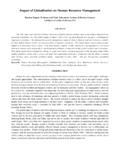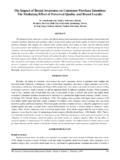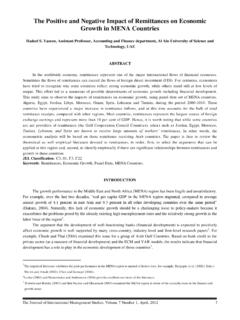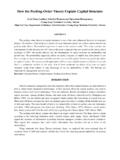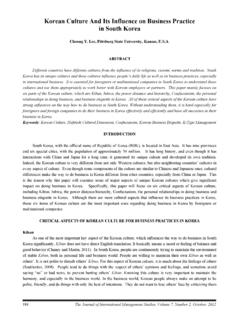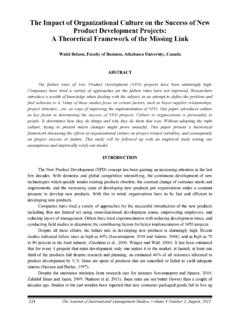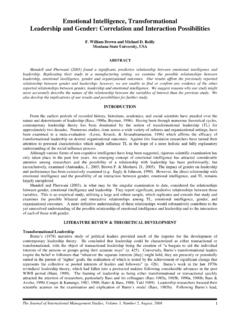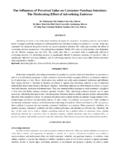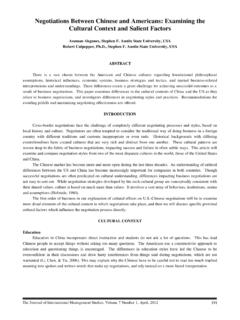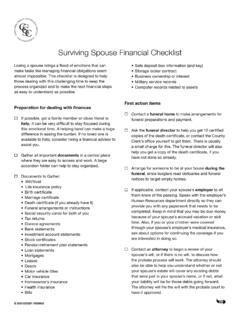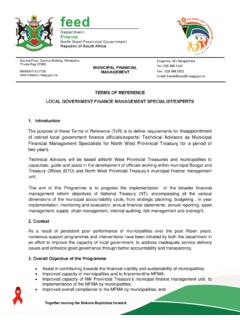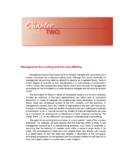Transcription of How Creditors Evaluate Financial Statements?
1 The Journal of International Management Studies, Volume 9 Number 1, February, 2014 issue156 How Creditors Evaluate Financial Statements? Dr. David S. Y. Cheng, Faculty (Business) Upper Iowa University Hong Kong Campus ABSTRAST Analysts, investors, borrowers and other stakeholders are interested to know how Creditors Evaluate Financial statements in general. The first part of this article covers how Creditors analyze a company s asset quality, capital structure, profitability, cash flow and repayment ability, and off balance sheet items. The latter part will discuss the additional information that Creditors may look for such as disclosure of inter-company/related party transactions, segment information breakdown by business activities and observations about a company s internal control in auditors report, so that a more complete, accurate and reliable view on a company s state of Financial health can be established.
2 INTRODUCTION The balance sheet of a company has variously been described as a snapshot at a specific moment in time and the window of the Financial health of the business. From a view point of a creditor, the balance sheet should serve as a valuation statement and the critical tool for evaluation so that they can gain insight into the Financial risks attached to a company. It would also act as a springboard for intelligent questioning. The following discussion on Financial statements excludes those specified industries, such as insurance companies, banks, securities firms and other non-profit organizations. ASSET QUALITY In order to Evaluate the Financial health of a company, the quality of assets is one of the primary concerns. What is the timing and likelihood of current assets turning into cash? What is the state of the fixed assets? Is the plant in need of large scale renovation?
3 Are land and buildings undervalued on the balance sheet? Clearly some real-world questions have to be asked here and first of all they have to consider separately the quality of inventories and accounts receivable. INVENTORIES Regarding inventories, Creditors can Evaluate their quality by asking themselves what the actual state of finished goods, raw materials, and work-in-progress is behind the numbers on the balance sheet. They need to find out whether there has been any prior period inventories write-down or devaluations, to reflect the fact that in the past some inventories could not be disposed of their full balance sheet valuation. Another quality indicator is inventories turnover period. This is calculated by dividing inventories over cost of sales times 365 days. This ratio expresses the number of days required to turnover the inventories levels shown on the balance sheet.
4 The real usefulness of this indicator is serving as a comparative tool. If they derive the turnover figures for a number of years, then they can see the trend. Has the turnover period slowed down or accelerated over the years? If it has slowed down what is the reason? Perhaps the company is carry stale inventories on its books, rather than writing it off. Or the company may be The Journal of International Management Studies, Volume 9 Number 1, February, 2014 issue 157 building inventories to counteract the effect of an anticipated raw materials shortage. Creditors are concerned about a company s liquidity being tied up in excessively high level of inventories. Accounts Receivable Accounts receivable or trade receivables are amounts due from customers for credit sales (Wild, Shaw and Chiappetta, 2009). Regarding accounts receivable, they can Evaluate their quality by asking similar questions.
5 What is the company s stated credit terms? To whom is the company selling its products? If the company sells goods to companies which have Financial problems, some of its receivable may never be collected. If it is selling to top rated companies, the picture may be brighter. The diversity of its market could be a factor too. Selling to a large number of unrelated customers mitigates the effect of any one customer s inability to repay. The balance sheet itself may give us some useful data. The item provisions on bad and doubtful debts is the company s reserve for collection losses. If it is growing as a percentage of sales, this may indicate increasing collection problems. Or conversely it may indicate that the company has over-reserved for expected losses that did not materialize. They can also derive a receivable turnover figure from the Financial statements.
6 The formula is accounts receivable over net sales times 365 days. Current year s receivable turnover can again be compared with prior s years to see if there is an apparent trend developing. A faster turnover period is better, since Creditors clearly prefer to see an improving cash conversion cycle; one that will ease a company s liquidity requirements. Both stocks and accounts receivable have discussed in such detail because arriving at an evaluation of the quality of the current assets is an important step in assessing a borrower s Financial strength as far as Creditors are concerned. As regards to long term fixed assets, in particular land and buildings, the current market value from a chartered surveyor or appraiser can be ascertained as a second opinion in view of the volatile nature of the property market. CAPITAL STRUCTURE The primary indicators for analysis are tangible net worth, gearing, debt-to-equity ratio and interest cover.
7 Large variations in tangible net worth should be investigated and accounted for. Increases are predominantly due to retained earnings or share issues. Decreases in tangible net worth normally indicate losses absorbed, in which case should be provided an estimate as to how long the company can continue at present levels. Gearing Gearing is defined as the percentage of long-term debt to equity (Alexander, Britton and Jorissen, 2011). It is a very useful indicator in determining the general health of a company. Levels may vary from industry to industry, but any company with a gearing in excess of one hundred percent should be investigated with particular reference to the following points, namely, utilization of borrowings, ability to service interest on debt, repayment ability and impact of interest expenses on liquidity and cash flow.
8 Excessively high percentage of gearing may indicate the imminent collapse of a business and usually recommendations would be made to protect the creditor s interests in this event. One has to be careful because Financial statements often do not distinguish between trade or accounts payable and other payable. Furthermore, in some cases trade finance liabilities may be put under accounts payable. In these cases it is helpful for auditors to provide a breakdown of the balance sheet The Journal of International Management Studies, Volume 9 Number 1, February, 2014 issue158 figures. On a conservative and prudent basis, Creditors usually treat bills discounted with recourse as interest-bearing debts to reflect the real gearing level which is higher. Highly geared companies are more vulnerable to business downturns than low geared ones because their interest burden becomes heavier as profits decline.
9 Their scope for further borrowings is usually restricted too. Increases in gearing could be caused by a number of reasons, namely, the company making losses which reduces the company s tangible net worth; the company expanding sales at the expense of profit margin and it is not able to increase tangible net worth via profit accumulation, or the assets of the company expanding so fast that current resources cannot accommodate. In such cases the company could be overtrading. Other signs of this are poor liquidity, working capital falling and possibly profit margins falling. The company thus requires further funding via new capital injection. Debt-to-Equity Ratio Debt-to-equity ratio provides a means for assessing the proportion of a company s debt in relation to shareholders equity. According to Wild, Shaw and Chiappetta (2009), a measure to assess the risk of a company s financing structure is the debt-to-equity ratio.
10 In this context, debt not only relates to bank borrowings but also accounts payables and other payables. Generally speaking, the higher the ratio, the higher is the likely exposure for the unsecured creditor. It also indicates the worsening of the company s Financial health. If the trend indicates a deteriorating position Creditors will consider enhancing collateral. Companies with low debt-to-equity ratios generally are able to obtain additional finance more easily. If gearing is increasing while the debt-to-equity ratio remains static or declining, then the creditor is taking the place of other forms of non-shareholder finance within the business. If gearing decreases, but debt-to-equity ratio increases, then the reverse is true. Interest cover can be defined as the number of times the profit before interest and tax covers the company s interest costs.
